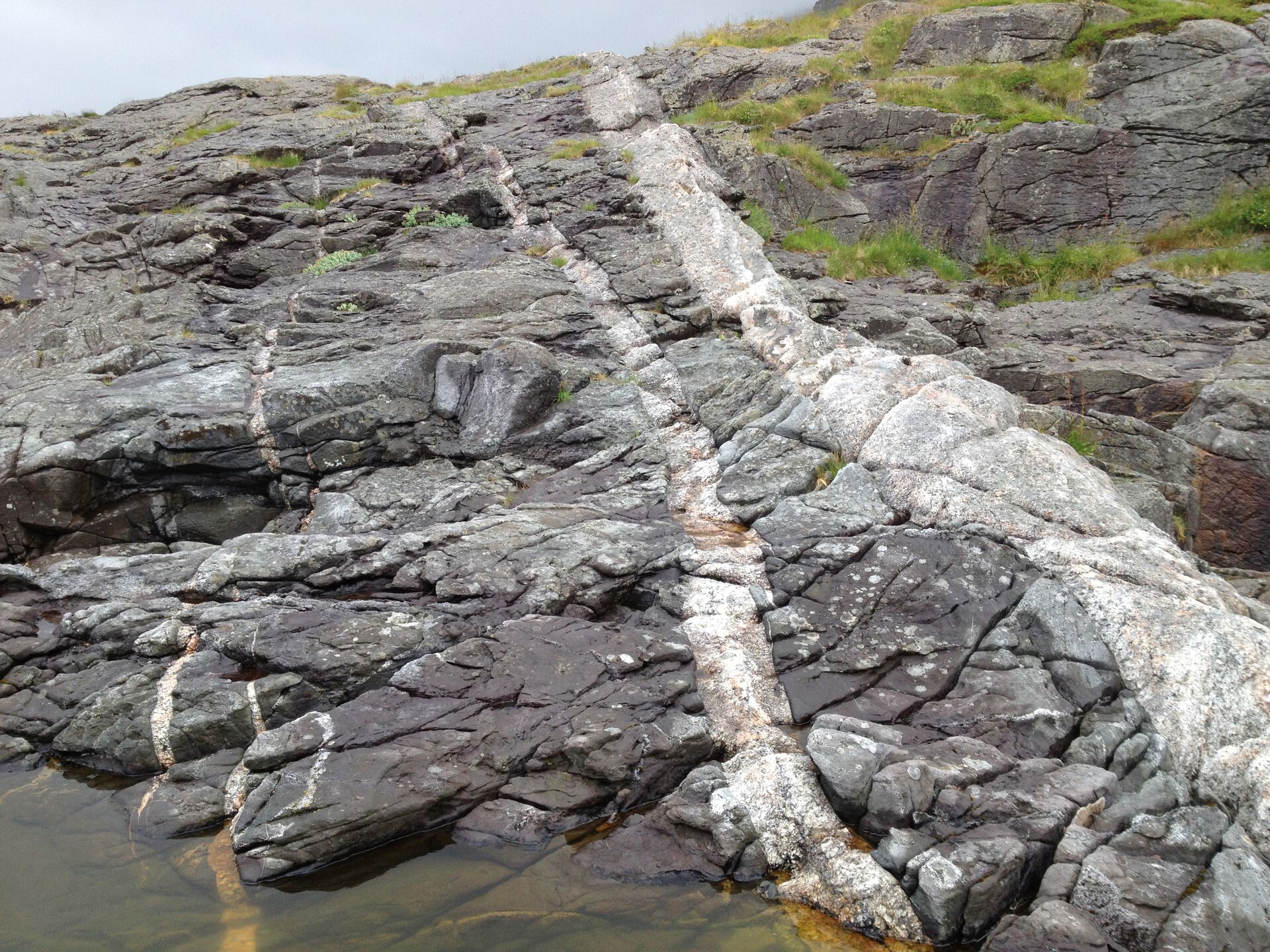Strain localization in shear zones is a fundamental process controlling deformation at plate boundaries and strength evolution of the lithosphere. However, the initiation of shear zones and the mechanisms of strain localisation are still unclear, and an integration of field studies with experimental rock deformation and numerical modelling and has generated different models.
A common observation is that shear zone initiation and localization are pre-determined by the availability of geometric and mechanical discontinuities such as compositional boundaries and brittle precursors. Shear zones preferentially exploit such heterogeneities instead of spontaneously nucleating in an intact host rock. Regardless of the actual nucleation process, the development of localized shear zones requires some form of strain weakening as the deformation progresses (the material within the shear zone must be weaker than outside of it).
Depending on the type of precursor, the shear zone normally either exploits the entire volume of the precursor or its boundaries with the host rock (Fig. 1).
This project will study examples of shear zones that deviate from this general trend, in that they are localized in discrete layers within pegmatite dykes from Å, Lofoten (Fig. 2). Thus, a different mechanism of strain localisation must be operative. Hand specimens and thin sections are already available, but fieldwork is recommended to understand the geological context of shear zone development.
The goal is to understand the mineralogical, geochemical and microstructural changes responsible for strain weakening and localisation. To do so, thin sections will be examined with light- and scanning electron microscopy, with the electron microprobe and with image analysis software.

Click here for a bigger version.

Click here for a bigger version.